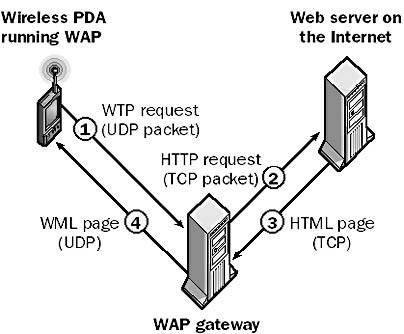The Wireless Application Protocol, commonly referred to as WAP, was conceived in the late 1990s as an answer to the burgeoning need for mobile internet access. But what precisely is WAP? How did it evolve to meet the expectations of a burgeoning mobile world? In this exploration, we’ll dissect the intricacies of WAP, its functional architecture, its applications, and the limitations that ultimately led to its decline in favor of more sophisticated technologies. Prepare for a journey through the past and present of mobile communication.
At its core, WAP functions as a technical standard designed to enable mobile devices to access the internet. Imagine a time when smartphones were not ubiquitous, and mobile phones were primarily used for voice communication and text messaging. WAP emerged as a bridge to a new realm where users could not only send messages but also browse web pages, check email, and obtain news updates—all from the convenience of their handheld devices.
The inception of WAP can be attributed to the Mobile Wireless Internet Forum, a conglomeration of telecom operators and technology companies. This initiative sought to standardize mobile internet access, ensuring compatibility among various devices and network providers. To understand WAP’s relevance, it’s essential to delve into its structure and functionality.
WAP comprises several layers, akin to the OSI model of networking, which can be broken down into three primary components: the WAP Gateway, the Wireless Markup Language (WML), and the WAP protocols themselves.
The WAP Gateway serves as a conduit between the mobile device and the internet. This digital border agent translates internet content—often designed for desktop browsers—into a format that can be understood by mobile devices. Without this intermediary, a mobile user would be confronted with cumbersome web pages that are not optimized for small screens.
Central to WAP is its unique protocol suite, which includes the WAP Session Protocol (WSP), WAP Transport Protocol (WTP), and the Wireless Datagram Protocol (WDP). Each of these protocols performs distinct functions, facilitating efficient data transmission and delivery. WSP operates similarly to HTTP but is tailored to manage the limitations of mobile networks, such as variable connection speeds. WDP, in essence, provides a universal transport layer for WAP data, thereby ensuring versatility across different network types.
Even more intriguing is the Wireless Markup Language (WML), the foundational markup language employed in WAP. Unlike HTML, which is predominantly used for traditional web pages, WML is designed to cater to the unique characteristics of mobile devices. It optimizes content for minimal bandwidth consumption, quick loading times, and a compact display. The result? A streamlined browsing experience that, while basic compared to today’s standards, was revolutionary at its inception.
So, why did WAP gain such traction in the late 1990s and early 2000s? One word: accessibility. With its innovative approach to mobile web access, WAP democratized information, enabling people to stay connected regardless of their location. This technological leap allowed for a vast array of applications to flourish, from mobile banking and chat services to news portals and entertainment apps. Imagine a world where a fleeting thought could be instantly searched, a message composed on the go, or a current event swiftly checked while on a commute. WAP made this possible.
However, as technology advanced, WAP began to show its limitations. The introduction of more robust protocols and technologies, such as HTML5 and advanced mobile broadband, gradually overshadowed WAP’s utility. The crux of the matter is that WAP was fundamentally designed for a world of limited data speeds and rudimentary applications, which no longer sufficed in an era characterized by high-speed 4G and 5G networks.
Moreover, the rich multimedia content that users now expect from their mobile experiences was anathema to WAP. In its essence, WAP struggled to accommodate the demand for graphics, video content, and interactive elements that modern users require. Consequently, WAP’s inability to adapt to this shifting landscape precipitated its decline.
As we contemplate the trajectory of mobile technology, a pertinent question arises: Can WAP teach us anything about the future of mobile communication? The challenge now lies in predicting the next leap forward. Are the technologies we embrace today—such as 5G—destined to face a similar fate, or will they evolve to meet user expectations?
While WAP has largely become obsolete, its legacy persists as a forerunner of mobile internet protocols. The very essence of its creation laid the groundwork for the responsive and interactive mobile experiences we often take for granted. Examining WAP provides crucial insights into the cyclical nature of technology and the perpetual need for innovation.
In conclusion, the Wireless Application Protocol was a pioneering endeavor that transformed mobile communication, carving a path through uncharted territory. While it faced insurmountable challenges that led to its decline, the principles of accessibility and adaptability still resonate today. Fast forward to the present day, and the mobile landscape remains vibrant and tumultuous, continuously evolving as new technologies emerge and user needs shift. The question remains—are we prepared to embrace the next revolutionary leap in mobile technology, whatever form it may take?
